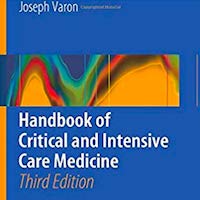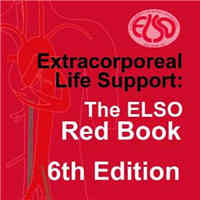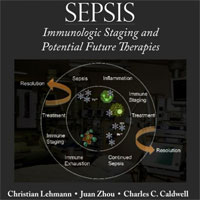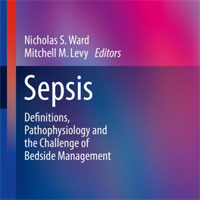Tag: ARDS
Efficacy of Serum Angiotensin II Levels in Prognosis of Patients with COVID-19
The serum angiotensin II levels decrease significantly in patients with coronavirus disease 2019, and this decrease is correlated with lung damage. There was no statistical significance between the serum angiotensin II... read more
No Significant Difference between Tocilizumab and Placebo in Severe COVID-19 Pneumonia Patients
In this randomized trial involving hospitalized patients with severe COVID-19 pneumonia, the use of tocilizumab did not result in significantly better clinical status or lower mortality than placebo at 28 days. In this... read more
Temporal Changes in the Epidemiology, Management, and Outcome from ARDS
The frequency of and outcome from ARDS remained relatively stable between 2002 and 2012. Plateau pressure > 29 cmH2O and driving pressure > 14 cmH2O on the first day of mechanical ventilation but not tidal volume > 8... read more
Physiological dead space and alveolar ventilation in ventilated infants
Prematurely born infants with pulmonary disease have a higher dead space than term controls, which may influence the optimum level during volume-targeted ventilation. A prospective study of mechanically ventilated infants... read more
Causes and Timing of Death in Critically Ill COVID-19 Patients
Mortality rate of critically ill COVID-19 patients is high, especially in those requiring invasive mechanical ventilation. However, the causes and the timing of death of patients admitted to the ICU for SARS-CoV-2 pneumonia... read more
Insight into ECMO, mortality and ARDS
ARDS is a severe disease with a high mortality rate despite ECLS therapy. Although endpoints and timing of the evaluations differed from those of the CESAR and EOLIA studies and the Extracorporeal Life Support Organization... read more
Consequences of COVID-19 in discharged patients
At 6 months after acute infection, COVID-19 survivors were mainly troubled with fatigue or muscle weakness, sleep difficulties, and anxiety or depression. Patients who were more severely ill during their hospital stay... read more
Nebulised heparin for patients with or at risk of ARDS
In patients with or at risk of acute respiratory distress syndrome (ARDS), nebulised heparin did not improve self-reported performance of daily physical activities, but was well tolerated and exploratory outcomes suggest... read more
Meralgia Paresthetica: COVID-19-associated ARDS treated with prone positioning
Prone positioning is one of the few interventions in acute respiratory distress syndrome (ARDS) which has a proven mortality reduction. Due to the coronavirus disease 2019 (COVID-19) pandemic, severe ARDS cases have sharply... read more
Subtle Presentations of Shock in the ED Setting
The patient was a 2-year-old female with a history of allergy to peanuts who was brought to the emergency department by her mother because of a complaint of allergic reaction. Twenty minutes prior to arrival, the patient... read more
Harnessing a Pioneering Cell Therapy Treatment for COVID-19 Patients with ARF
A world-leading UK-wide trial supported by NIHR is offering a pioneering cell therapy treatment for patients with acute respiratory failure (ARF) caused by COVID-19. The groundbreaking study, led by experts at Queen's... read more
COVID-19 Pneumonia: Typical or Atypical Form of ARDS?
Evidence-based guidelines can never help a doctor resolve whether a patient is best managed by inserting an endotracheal tube or avoiding its use. That decision is based on clinical judgment, gestalt, and tacit knowledge.... read more
Circuits Between Infected Macrophages and T Cells in COVID-19 Pneumonia
Some patients infected with Severe Acute Respiratory Syndrome Coronavirus-2 (SARS-CoV-2) develop severe pneumonia and the acute respiratory distress syndrome (ARDS). Distinct clinical features in these patients have led... read more
Trauma ICU Rounds – The rEVOLUTION of ECMO
What are the indications for ECMO beyond ARDS and refractory cardiogenic shock? In which patients should we consider eCPR and is this the new standard of care for patients sustaining out-of-hospital cardiac arrest? Finally,... read more
The Value of Decreasing the Duration of the Infectious Period of Severe ARDS COVID-19 Infection
Finding medications or vaccines that may decrease the infectious period of severe acute respiratory syndrome coronavirus 2 (SARS-CoV-2) could potentially reduce transmission in the broader population. We developed a computational... read more
Transfusion Associated Circulatory Overload
A 67-year-old female with a history of congestive heart failure and CKD was brought in by ambulance from her nursing home for a gastrointestinal bleed. The patient’s total fluid balance from her nursing home was 2.5L over... read more
Lactoferrin for the Treatment of COVID‑19
The coronavirus disease 2019 (COVID‑19) outbreak was caused by infection with the severe acute respiratory syndrome coronavirus 2 (SARS‑CoV‑2). The clinical outcomes of elderly individuals and those with underlying... read more
Mitochondrial Damage-Associated Molecular Patterns Exacerbate Lung Fluid Imbalance Via the Formyl Peptide Receptor-1 Signaling Pathway in Acute Lung Injury
Mitochondrial damage–associated molecular patterns exacerbate lung fluid imbalance in the experimental acute lung injury model through formyl peptide receptor-1 signaling, the inhibition of which may prevent exacerbation... read more
Pulmonary Infections Complicating ARDS
Pulmonary infection is one of the main complications occurring in patients suffering from acute respiratory distress syndrome (ARDS). Besides traditional risk factors, dysregulation of lung immune defenses and microbiota... read more
Improved Oxygenation After Prone Positioning May Be a Predictor of Survival in Patients With ARDS
We found a significant difference in the Pao2:Fio2 ratio after the first prone positioning between ICU survivors and nonsurvivors. The improvement in oxygenation after the first prone positioning was a significant predictor... read more
Will the asthma revolution fostered by biologics also benefit adult ICU patients?
Asthma exacerbations are inflammatory events that rarely result in full hospitalization following an ER visit. Unfortunately, certain patients require prolonged support, including occasional external lung support through... read more
Experience Caring for a Severe COVID-19 Patient With ARDS in the ICU
The author's experience caring for a patient with COVID-19 whose condition deteriorated rapidly into a critical illness in the negative pressure room of the ICU is described in this article. The onset of severe acute... read more









